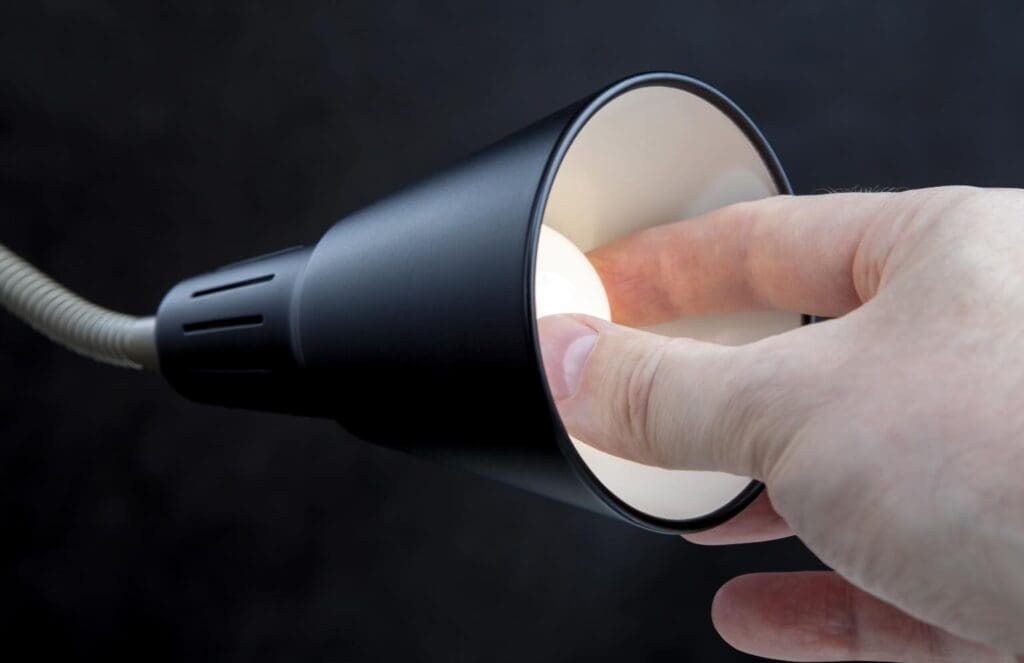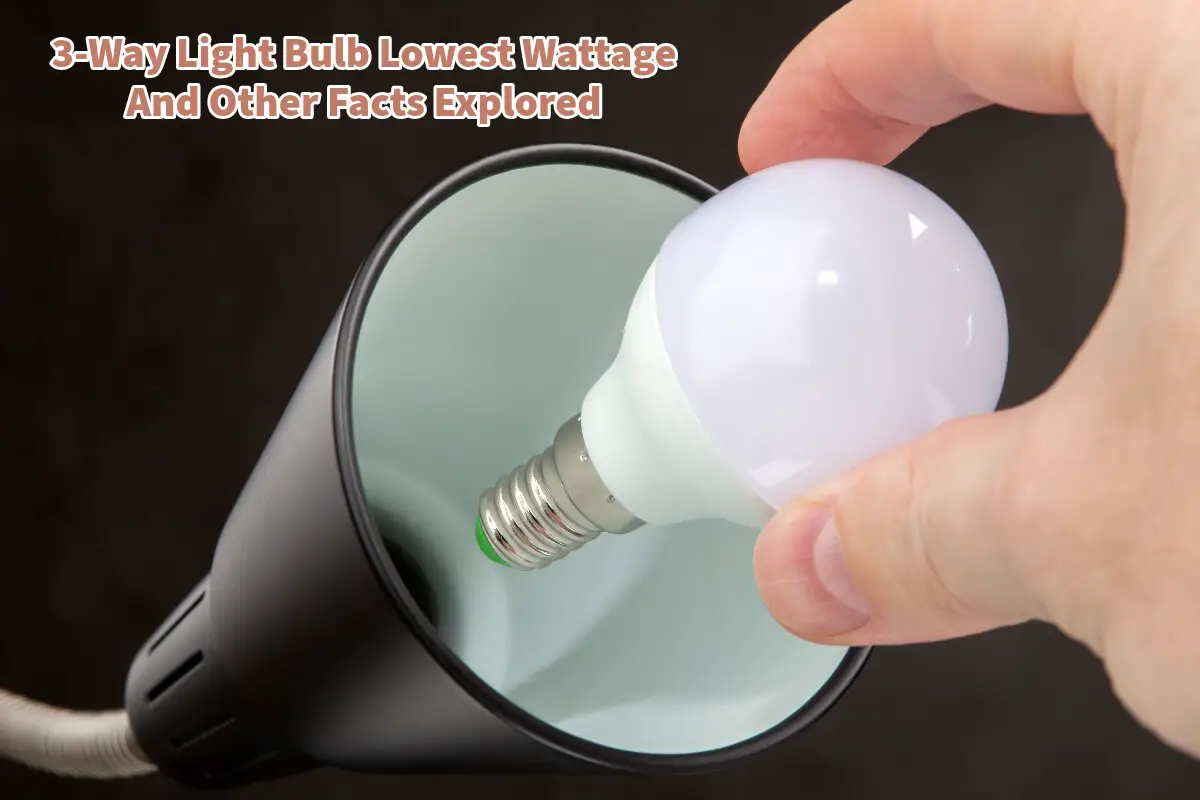The allure of a 3-way light bulb stems from its unique capability to provide multiple lighting intensities. This feature has made it a preferred option for homeowners and interior enthusiasts.
Whether you’re setting a cozy mood for a home-cooked dinner or seeking bright illumination for an evening read, the 3-way bulb meets the occasion effortlessly. When selecting the correct 3-way bulb, there are essential considerations to factor in. A 3-Way Light bulb has the standard E26 screw base. It draws upon 30/70/100 or 50/100/150 watts to produce three distinct brightness levels. Read on as we delve into these pivotal aspects of the 3-Way Lift Bulb.
Table of Contents
- 3-Way Light Bulb Lowest Wattage And Other Factors: A Comprehensive Guide
- Key Factors To Consider When Choosing A 3-Way Light Bulb:
- LEDs: The Modern Choice For 3-Way Lamps
- Related Content
3-Way Light Bulb Lowest Wattage And Other Factors: A Comprehensive Guide
Three-way light bulbs offer the unique advantage of providing varying light levels with a single bulb. This makes them incredibly versatile, perfect for tasks requiring fluctuating light intensities, from reading to creating ambiance.
But what do you need to know before purchasing a 3-way light bulb? Let’s break it down.
Understanding The Basics Of 3-Way Bulbs
When it comes to a 3-way lamp, not just any bulb will do. Specifically designed for these lamps, a 3-way bulb works in conjunction with a 3-way socket and switch. Unlike the incandescent regulated by dimmers, the 3-way incandescent light bulbs operate with each filament at full voltage.
This means the light color remains consistent, irrespective of which of the three light levels you choose.
Lowest Wattage Of 3-Way Light Bulbs
Utilizing a three-way bulb in a corresponding three-way socket simplifies your lighting choices. Typically, this arrangement employs a bulb with a standard screw base (E26), harnessing 30/70/100 or 50/100/150 watts to generate its three distinct light intensities.

Key Factors To Consider When Choosing A 3-Way Light Bulb:
The magic of a 3-way light bulb lies in its ability to offer varied light intensities, making it a versatile choice for many homeowners and interior designers. Whether you’re looking for the perfect ambiance for a dinner date at home or need ample lighting for a late-night reading session, the 3-way bulb seamlessly adapts to your needs.
However, when choosing the perfect 3-way bulb, several key factors come into play. Read on as we navigate through the crucial elements to keep in mind.
1. Wattage
A bulb’s wattage is crucial for conserving energy and cutting costs. Notably, while you can use a bulb with a wattage lower than the fixture’s maximum, going over the limit is unsafe. The lower the wattage, the less energy it consumes, making it more eco-friendly and cost-effective.
2. Brightness
Brightness is quantified in lumens. The principle is simple: the higher the lumens, the brighter your bulb. Opt for bulbs with higher lumens for spaces requiring more intense light, like reading corners. Conversely, a lower lumen count would suffice for mood or ambient lighting.
3. Estimated Yearly Energy Cost
With rising energy prices, a bulb’s projected yearly energy cost can significantly influence purchase decisions. It’s always prudent to check this estimate, as it gives you an idea of the long-term savings or costs associated with a bulb.
4. Lifespan
Nobody likes the hassle of frequent bulb replacements. Fortunately, most bulb packages now provide an estimated lifespan. This is especially important for locations that are hard to reach, ensuring minimal maintenance.
5. Light Appearance
This is often a matter of personal preference. Measured on the Kelvin (K) scale, the light’s appearance can range from warm to cool. Lower values (2000K-3000K) give a warm, cozy, golden glow, perfect for bedrooms or living areas. Mid-range values (3500K-4500K) offer a bright, neutral light, while higher values (5000K and above) limit astonishing, blue-ish, daylight-like brightness, often preferred for task lighting or office spaces.
LEDs: The Modern Choice For 3-Way Lamps
LEDs have revolutionized the lighting industry, offering unmatched efficiency and versatility. When considering a 3-way LED light bulb, here’s what to keep in mind:

1. Color
As with other bulbs, the color of LED light is gauged in Kelvins. A spectrum exists from warm yellows to cool blues, allowing you to match the mood and functionality of your space.
2. Power Consumption
LEDs are a marvel in energy efficiency. Consuming a mere 6-8 watts, they can provide brightness equivalent to a 60-watt incandescent or a 13-15-watt CFL. This means significant savings on your energy bills.
3. Brightness And Color Quality
Just like their counterparts, the brightness of LED bulbs is measured in lumens. However, with advancements in technology, they also boast superior color rendering, ensuring that everything under the light appears vivid and true to life.
Whether you’re looking to light up a reading room or a workspace or add ambiance to your living area, understanding the intricacies of 3-way light bulbs can ensure you make the right choice.
You can optimize functionality and aesthetics by considering wattage, brightness, lifespan, and light appearance. With the energy-efficient LED options available today, finding a bulb that aligns with your lighting needs and environmental values is easier than ever.
To properly use a 3-way light bulb, it’s essential to pair it with a compatible 3-way socket. At Mondoro, we specialize in crafting export-quality UL lamps tailored for your collection. If you’re interested in learning more, please reach out to us.
If you want to see how Mondoro can help you with your Ul Certified lamp needs, we would love to talk to you about how we can help you.
Find out more about how Mondoro can help you create, develop, and manufacture excellent home decor and furniture products – don’t hesitate to contact me, Anita. Check out my email by clicking here or become a part of our community and join our newsletter by clicking here.
Mondoro gives out a FREE Lookbook to anyone interested. You can receive a copy of our latest Lookbook by clicking here.
Listen to our Podcast called Global Trade Gal. You can find it on all major podcast platforms. Try out listening to one of our podcasts by clicking here.
Subscribe to our Mondoro Company Limited YouTube Channel with great videos and information by clicking here.
Related Content
Selling Lamps Online, Understanding Listings And Liability
To sell a lamp to most countries, the lamp must be up to that country’s standard. Many places will not even allow a lamp to be imported if the lamp does not have the proper electrical components and prototypes. Lamps should be UL or ETL listed to be sold in the United States for the US market.
You can learn more by reading Selling Lamps Online, Understanding Listings and Liability by clicking here.
What Is The Difference Between LED, CFL, And Incandescent Light Bulbs?
Incandescent Light Bulb is the light bulb that most of us call a standard lightbulb or the lightbulb Edison invented. CFL is also known as a Compact Fluorescent lightbulb and, as the name implies, a compact fluorescent light bulb. LED is a light bulb that uses light-emitting diodes.
You can discover more by reading What Is The Difference Between LED, CFL, and Incandescent Light Bulbs? by clicking here.
Why Do We Use Lampshades And Light Fixtures?
Lampshades and light fixtures are something that most people have in their homes. Almost every interior space will have some lampshades and light fixtures. But lampshades and light fixtures are two different things that have other uses.
You can learn more by reading Why Do We Use Lampshades And Light Fixtures? by clicking here.


